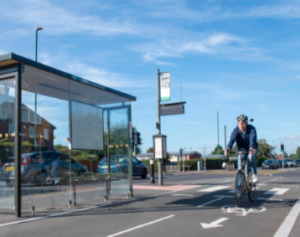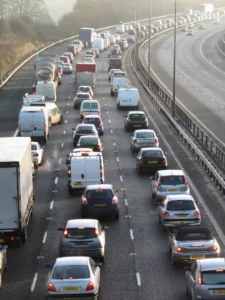The Department for Transport (DfT) will release the £175 million second tranche of its Emergency Active Travel funding.
This time, local authorities will be expected to publish detailed plans showing consultation with communities and businesses, submit evidence of further consultation prior to implementation and thereafter submit monitoring reports on schemes for between 6 and 12 months after their opening showing how each has been modified on ongoing community feedback.
The annoucement comes after much criticism of temporary cycle schemes including from a group of 14 Conservative MPs who called for the funding to be scrapped altogether.
The new money, part of the £2 billion announced for cycling and walking in May, will fund measures including:‘School Streets’, where streets around schools are closed to motorists at school times, low-traffic neighbourhoods (LTNs), where residential side streets are closed to through traffic to stop rat-running, segregated cycle lanes, pedestrian improvements.
These will give people more opportunities to choose cycling and walking for their day-to-day journeys, as part of wider government plans to boost active travel.
The funding comes as a survey undertaken by Kantar Media last month reveals that 65% of people across England support reallocating road space to cycling and walking in their local area. Nearly 8 out of 10 people (78%) support measures to reduce road traffic in their neighbourhood.
In London, independent polling by Redfield & Wilton shows 19% of people oppose LTNs, 52% support them and 25% are neutral. Surveys are also being conducted of residents in individual LTNs where roads have been closed. The first of these, in south London, found 56% wanted to keep the scheme, against 38% who wanted to remove it.
The multi-million-pound investment marks another step towards the government’s ambition to deliver more active travel options in communities across the country and build back greener – benefitting the nation’s health and the environment.
Evaluation of early School Streets projects has shown traffic outside schools has reduced on average by 68%, children cycling to school has increased by 51% and harmful vehicle pollution outside schools is down by almost three quarters.
Transport Secretary Grant Shapps said: “It has been great to see so many people build cycling and walking into their daily travel habits. To support them, we know it’s vital to have the right infrastructure in place so everyone – cyclists, pedestrians and motorists – can use our roads. Whether you’re walking, cycling, driving or using public transport, people must have the space they need to get around safely.”
Local authorities will be required to engage closely with the Department for Transport (DfT) throughout the process – while Active Travel England, when set up, will further assess plans for active travel schemes to ensure they are of the highest quality.
To help councils implement better schemes, updated guidance, which has also been released today, emphasises the need for practical and pragmatic solutions.
Councils will receive funding based on how well they have complied with the criteria set out by the Transport Secretary in July.
In a letter to council leaders outlining the new funding allocations, the Transport Secretary said that while most schemes were of genuine value in promoting cycling and walking, other schemes implemented through the first tranche of funding had made less meaningful change to the status quo.
Mr Shapps said he had in mind many of the pavement widenings put in town centres by many councils using barriers. These, he said, could “prevent pedestrians from crossing the road, cause congestion for buses and motor traffic, and impede access for kerbside businesses,” yet were also “relatively little used by pedestrians”.
The funding is part of the most ambitious plans yet by government to encourage even more people to choose active travel and build back greener.
Commitments from the plan include making cycle training available for every adult who wants it, setting new, higher standards for cycling infrastructure and boosting access to e-bikes.






















